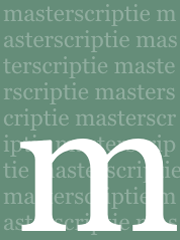start > Klassieke teksten > Late Han tot Tang > tekst
養性延命錄 Yangxing yanming lu
Engelse titel: records of cultivating nature and extending life
養性延命錄 Yangxing Yanming lu - Records Concerning Tending Life and the Prolonging of Life
Attributed to Tao Tao Hongjing 陶弘景 (456-536)
The Yangxing Yanming lu is a synoptic text comprised entirely of excerpts of famous yangsheng and philosophical texts from the late Han to the Sui, so roughly between 100 and 500 CE. Because it is comprised entirely of earlier text fragments, it does not constitute a ‘book’ as we commonly think of one, composed by a single author with a coherent driving intention or perspective, but rather it is a point of condensation of a textual genre, gathering multiple fragments together and presenting them as if they were a unified whole. Such a work is a cross-section of a particular point in time, indicating the variety of texts in circulation then. (Stanley-Baker 2006 p6)
An eclectic work, it contains citations from over thirty different sources, many of which have not survived. It provides a unique view to the early history of yangsheng, allowing us to see what different texts and practices were circulating from the Han up to the Jin and beyond.
The exercises and other practices found in its pages are focused on increasing health, vitality and longevity. (Stanley-Baker 2006 p1)
In summary, the YXYML is a text from the early-mid Tang based largely on the Jin text, the Yangsheng yaoji by Zhang Zhan. It includes the works of earlier yangsheng authors such as Daolin, Zhai Ping and Huang Shan, known longevists from the Han. Daolin, however, is not the famed Buddhist figure Zhi Dun. The focus of these works is on the cultivation of the body through a variety of practices such as circulating qi, dietary proscriptions, arts of the bedchamber, and other prohibitions. (Stanley-Baker 2006, p21)
Stanley-Baker dateert de compilatie tussen 627-763.
Indeling tekst
De titels zijn van Stanley-Baker 2006, p20
1. 教戒 Jiào jiè - Teachings and Prohibitions
2. 食戒 Shí jiè - Dietary Prohibitions
3. 雜戒忌禳害祈善 Zá jiè jì ráng hài qí shàn - Miscellaneous Prohibitions, Taboos, Rites against Calamity and Prayers for Blessings
4. 服氣療病 Fúqì liáo bìng - Ingesting Qi to cure illness,
5. 導引按摩 Dǎoyǐn ànmó - Daoyin and Massage.
6. 御女損益 Yù nǚ sǔnyì - The benefits and dangers of Harem Girls
Literatuur en vertalingen
Toelichting bij de literatuur
Michael Stanley Baker geeft een vertaling van het voorwoord en de hoofdstukken 1, 4 en 5 in zijn scriptie Cultivating Body, cultivating self uit 2006
Despeux in Schipper 2004 The Taoist Canon p 345-346
hst 2 en 3 zijn vertaald door Water Switkin (in a self-published monograph titled Immortality)
hst 6 Douglas Wile, in Art of the Bedchamber: The Chinese Sexual Yoga Classics Including Women's Solo Meditations ISBN 0-7914-0886-8
Baker geeft als commentaar:
Switkin's translation is a commendable work for a young scholar in the early 1970's when the field of Daoist studies and Chinese medicine was in a very different state. Given the vastly richer scholarship in these fields thirty years later, there are areas of his translation that can be improved on, (..)
Wile's translation is excellent, and there is little to amend, apart from one mistranslation of the term daoji 道機.
Hieronder kunt u een selectie maken van de verschillende publicatievormen en de taal. Ik beperk me tot vier taalgebieden (Nederlands, Engels, Frans en Duits). De meeste literatuur is overigens engelstalig. U kunt bij teksttype ook apart de vertalingen selecteren en U kunt desgewenst ook een specifieke auteur zoeken.
Boeken 1 tot 1 van de 1

Stanley-Baker, Michael (2006). Cultivating body, cultivating self: a critical translation and history of the Tang dynasty Yangxing yanming lu (records of cultivating nature and extending life). *
Ook online.
Boeken 1 tot 1 van de 1
